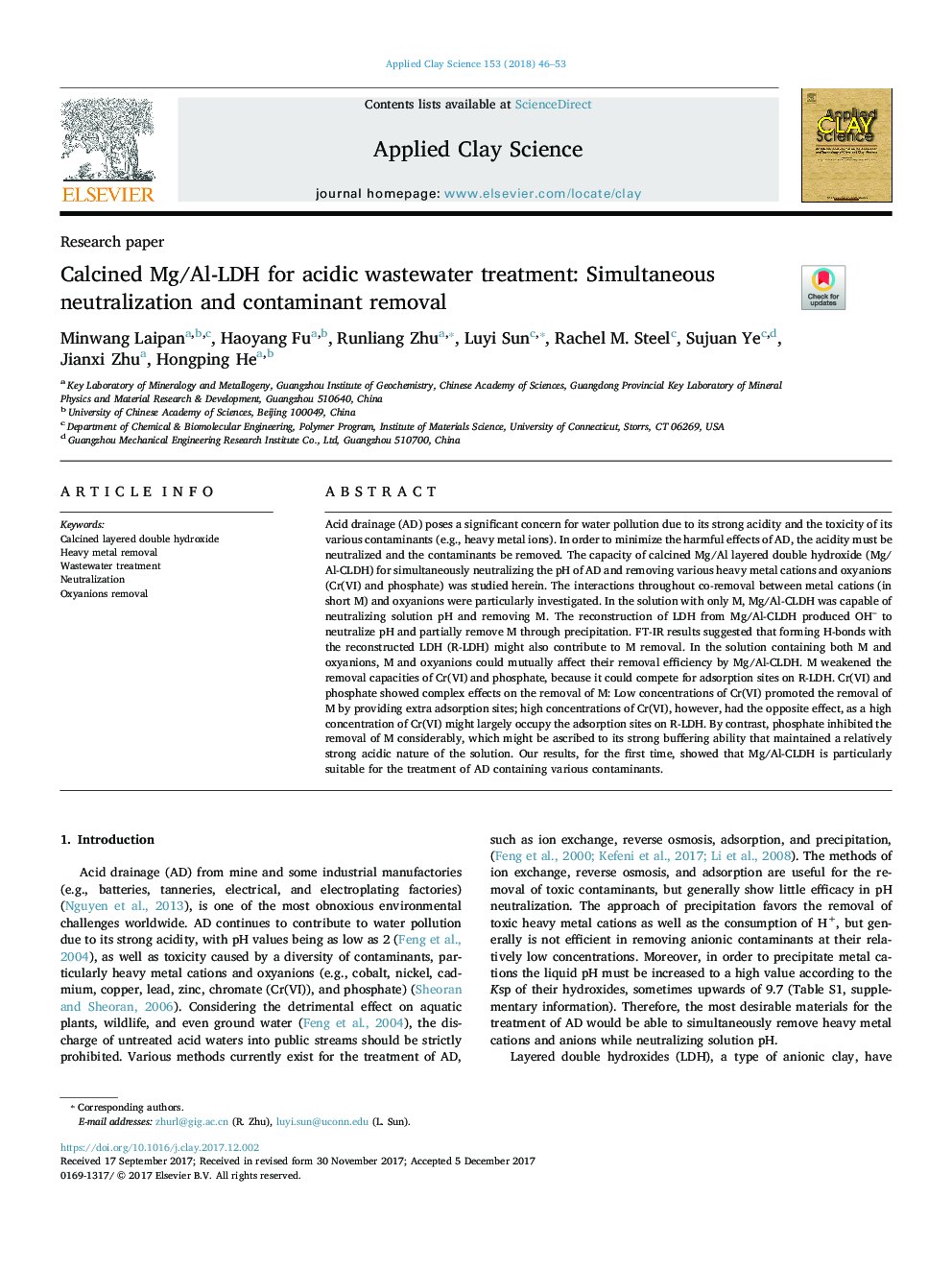| Article ID | Journal | Published Year | Pages | File Type |
|---|---|---|---|---|
| 8046210 | Applied Clay Science | 2018 | 8 Pages |
Abstract
Acid drainage (AD) poses a significant concern for water pollution due to its strong acidity and the toxicity of its various contaminants (e.g., heavy metal ions). In order to minimize the harmful effects of AD, the acidity must be neutralized and the contaminants be removed. The capacity of calcined Mg/Al layered double hydroxide (Mg/Al-CLDH) for simultaneously neutralizing the pH of AD and removing various heavy metal cations and oxyanions (Cr(VI) and phosphate) was studied herein. The interactions throughout co-removal between metal cations (in short M) and oxyanions were particularly investigated. In the solution with only M, Mg/Al-CLDH was capable of neutralizing solution pH and removing M. The reconstruction of LDH from Mg/Al-CLDH produced OH- to neutralize pH and partially remove M through precipitation. FT-IR results suggested that forming H-bonds with the reconstructed LDH (R-LDH) might also contribute to M removal. In the solution containing both M and oxyanions, M and oxyanions could mutually affect their removal efficiency by Mg/Al-CLDH. M weakened the removal capacities of Cr(VI) and phosphate, because it could compete for adsorption sites on R-LDH. Cr(VI) and phosphate showed complex effects on the removal of M: Low concentrations of Cr(VI) promoted the removal of M by providing extra adsorption sites; high concentrations of Cr(VI), however, had the opposite effect, as a high concentration of Cr(VI) might largely occupy the adsorption sites on R-LDH. By contrast, phosphate inhibited the removal of M considerably, which might be ascribed to its strong buffering ability that maintained a relatively strong acidic nature of the solution. Our results, for the first time, showed that Mg/Al-CLDH is particularly suitable for the treatment of AD containing various contaminants.
Related Topics
Physical Sciences and Engineering
Earth and Planetary Sciences
Geochemistry and Petrology
Authors
Minwang Laipan, Haoyang Fu, Runliang Zhu, Luyi Sun, Rachel M. Steel, Sujuan Ye, Jianxi Zhu, Hongping He,
